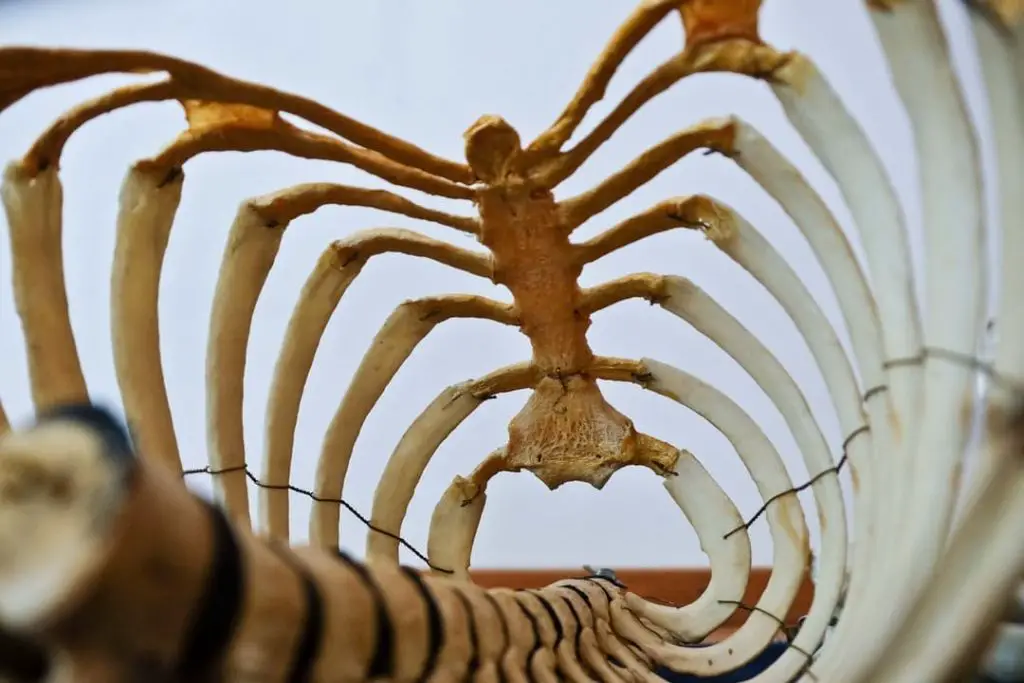There are a lot of myths and misconceptions out there about what happens when you crack your back. Some people believe that cracking your back can cause serious injury, while others believe that it is a helpful way to relieve pain.
When you crack your back, you are actually popping or snapping the small spaces between your vertebrae. This is possible because your spine is made up of bones (vertebrae) that are separated by small cushions (discs). The discs act as shock absorbers and allow your spine to move and bend.

For some, cracking their back is a regular part of their day. They do it without thinking and often enjoy the satisfying feeling it produces. But what happens when you crack your back? Is it perfect for you? And can it lead to any long-term problems? Here’s what you need to know.
Anatomy of spine
The spine is a column of bones (vertebrae) that extends from the skull base to the pelvis. The spine bones are separated by intervertebral discs and connected by ligaments and joints. The primary function of the spine is to protect the spinal cord.
The spine comprises 33 vertebrae divided into five regions: cervical, thoracic, lumbar, sacral, and coccygeal. Each region has a different number of vertebrae. The cervical spine has seven vertebrae, the thoracic spine has 12 vertebrae, the lumbar spine has five vertebrae, the sacral spine has five fused vertebrae, and the coccygeal spine has 4 vertebrae.

The intervertebral discs are pads of cartilage that separate the vertebrae and act as shock absorbers. Each disc has a tough outer layer (the annulus fibrosis () and a soft inner layer nucleus pulposus).
The ligaments of the spine are strong bands of tissue that connect the vertebrae to each other and provide stability. The joints of the spine allow for some movement between the vertebrae.
The spinal cord is a bundle of nerves that extends from the brain through the spinal column. The spinal cord is surrounded by three layers of protective tissue (the dura mater, arachnoid mater, and pia mater) filled with cerebrospinal fluid.
The primary function of the spine is to protect the spinal cord. The spinal cord is responsible for sending signals between the brain and the rest of the body. The spinal cord is a very delicate structure, and it can be easily damaged.
The spine bones are connected by ligaments and joints, which allow for some movement. However, too much exercise can damage the spine. The intervertebral discs act as shock absorbers and help to protect the spine from damage.
What Happens When You Crack Your Back?
For starters, it’s essential to understand different types of cracks. The most common type is a compressive force crack, which occurs when the spine is compressed (squeezed together). This can happen from everyday activities like lifting heavy objects or sitting for long periods.
When the spine is compressed, the vertebrae (bones) can rub against each other. This can cause the joints in between the vertebrae to become inflamed. In some cases, the disks in the spine can also become damaged.
If you crack your back, you may hear a popping sound. This is caused by gas bubbles that are released from the joints. Cracking your back can also lead to a temporary release of endorphins, which block pain signals from the brain.
There is no definitive answer, as it depends on the individual and the type of crack. Some people find relief from cracking their back, while others may experience more pain or discomfort. It’s always best to consult with your doctor or healthcare provider before trying this self-treatment method.
Different theories about cracking your back
One theory is that when you crack your back, you release gas that has built up in your joints. This gas is composed of nitrogen and carbon dioxide, and it’s thought that when these gases escape, they provide relief from pain or discomfort.
Another theory is that cracking your back helps realign your spine and improve your posture. When your spine is out of alignment, it can pressure your nerves and lead to pain. Cracking your back can help to relieve this pressure and improve your overall health.
Finally, some people believe that cracking your back can provide satisfaction or relief. When you crack your back, you may feel a sense of accomplishment or relief from pain or tension.
Does cracking your back feel good?
It certainly can, but it may not be the best thing for your spine. When you crack your back, you’re actually putting stress on your spinal joints and disks.
This can lead to joint damage and disk degeneration over time. So, while cracking your back may provide temporary relief from pain or stiffness, it’s not a long-term solution. If you’re looking for a more sustainable way to improve your spine health, consider these three tips:
Get regular exercise
Regular exercise is one of the best things you can do for your spine. Exercise helps strengthen the muscles that support your spine and keep it healthy. It also helps improve your flexibility and range of motion, reducing pain and stiffness.
Maintain a healthy weight
Being overweight or obese puts extra strain on your spine. This can lead to pain, stiffness, and other problems. Losing weight can help reduce the strain on your spine and improve your overall health.
Stay active and eat a healthy diet.
Staying active and eating a healthy diet is essential for maintaining a healthy spine. Eating nutritious foods helps keep your bones strong, while exercise helps strengthen the muscles that support your spine. Both of these things can help reduce your risk of developing problems with your spine.
Are there any risks about cracking your back?
Although there are no serious risks associated with cracking your back, a few potential problems could occur. These include:
Herniated discs
A herniated disc occurs when the soft inner material leaks out through a tear in the outer layer. This can put pressure on nearby nerves and cause pain.
Spinal stenosis
This condition occurs when the spaces inside your spine narrow, putting pressure on your spinal cord and nerves. This can cause pain, numbness, and weakness.
Osteoarthritis
This degenerative disease causes the cartilage between your joints to break down. This can lead to pain, stiffness, and inflammation.
There are some risks associated with cracking your back, but they are generally not serious. The most common risk is that you may experience pain in the area where you cracked your back. You may also be at risk for minor injuries, such as bruises or strains.
You may suffer from a herniated disc or another more serious injury in rare cases. If you experience any pain or discomfort after cracking your back, it is important to see a doctor to make sure that there is no underlying condition causing the pain. Cracking your back should only be done with caution and under the supervision of a healthcare professional.
How can you do it safely?
Lie on your back on the floor and place a rolled-up towel under your lower back to crack your back safely. Then, slowly bring your knees up to your chest and hold them there for a few seconds before releasing them. You can also try this stretch with a foam roller.
Another way to safely crack your back is to lie on your stomach and place a pillow under your hips. Then, slowly arch your back and hold the stretch for seconds. You can also perform this stretch with a foam roller.
How to get rid of a stiff back?
Here are the tips to get rid of stiff back:
1. Try some gentle stretches to loosen up your back muscles.
2. Take a hot bath or use a heating pad to help relax your muscles.
3. Get massages regularly to keep your back loose and pain-free.
4. See a chiropractor or other healthcare professional for regular adjustments.
5. Practice good posture and lifting techniques to avoid pulling your back.
How often should you crack your back?
It is generally recommended that you crack your back once or twice a day. Over-cracking can lead to further stiffness and pain. When cracking your back, be sure to use gentle pressure and movements. If you experience any pain or discomfort, stop immediately.
Why does my back feel like it needs to crack but won’t?
There are a few reasons why your back might feel like it needs to crack but won’t. One reason could be that you have tight muscles in your back. When muscles are tight, they can pull on the bones and joints, which can cause pain and discomfort.
Another reason could be that you have a joint problem, such as arthritis. Arthritis can cause the joints to become inflamed, leading to pain and stiffness.
Finally, if you have a condition called spondylolisthesis, one of your vertebrae has slipped out of place. This can also cause pain and stiffness in the back. If you’re experiencing any pain or discomfort in your back, it’s best to see a doctor or physical therapist find out the cause and get treated.
Conclusion
When you ‘crack’ your back, what exactly are you doing? And is it harmful? In this post, we have answered those questions and more. We also explored some of the possible benefits of cracking your back – and the potential risks involved. So, read on to learn more!
Additional Contents:
What Happens To Tattoos When You Lose Weight
Do Fingerprints Grow Back If Burnt?
Can a Turtle be Without a Shell?
PPS Or PSS?
How to Unscrew a Stripped Screw



